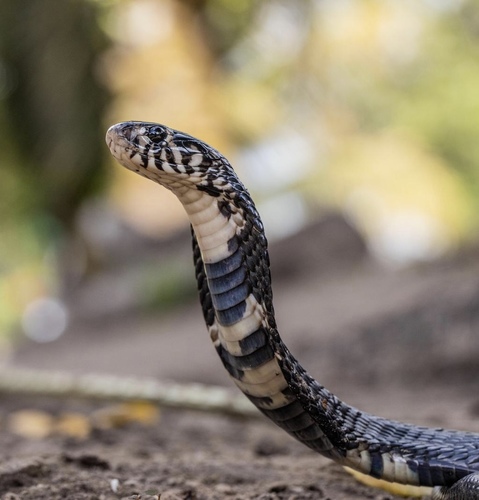
Forest Cobra
The forest cobra, Naja melanoleuca, is a strikingly large and agile snake, known for its stark black and white scales. Found in Africa's forests and savannas, it skillfully hunts during the day. Its role as both predator and prey makes it a vital part of the ecosystem.
High
Aggression
Least Concern
Conservation Status
Decreasing
Population Trend
Characteristics
Naja melanoleuca, known as the forest cobra, is native to sub-Saharan Africa. It thrives in diverse habitats, from forests to savannas. Notably large, it can exceed 3 meters in length. The species is diurnal, with a diet primarily of amphibians, birds, and small mammals. Its distinctive black and white coloration provides effective camouflage in shadowy undergrowth.
Distribution Range of the Forest Cobra
Naja melanoleuca, commonly known as the forest cobra, is native to the central and western regions of Africa. Its geographical distribution includes countries such as Gabon, Ghana, Cameroon, Democratic Republic of the Congo, Ivory Coast, Liberia, Nigeria, and Uganda. It is also found in some parts of Angola, Benin, Burkina Faso, and Togo.
Forest Cobra's Habitat
Environmental Conditions
The forest cobra primarily inhabits tropical and subtropical forests, which are characterized by high humidity and dense vegetation. It can also be found in savannas, grasslands, and near water bodies like rivers and lakes. The species is adaptable and can thrive in secondary forests and agricultural areas.
Ecological Niche
Naja melanoleuca occupies the ecological niche of a top predator in its habitat. It preys on a variety of animals, including amphibians, birds, small mammals, and other reptiles. The forest cobra is both terrestrial and arboreal, often climbing trees to hunt or escape threats. It plays a crucial role in controlling the populations of its prey species, thereby maintaining ecological balance.
Copyright @ Nature Style Limited. All Rights Reserved.
 English
English